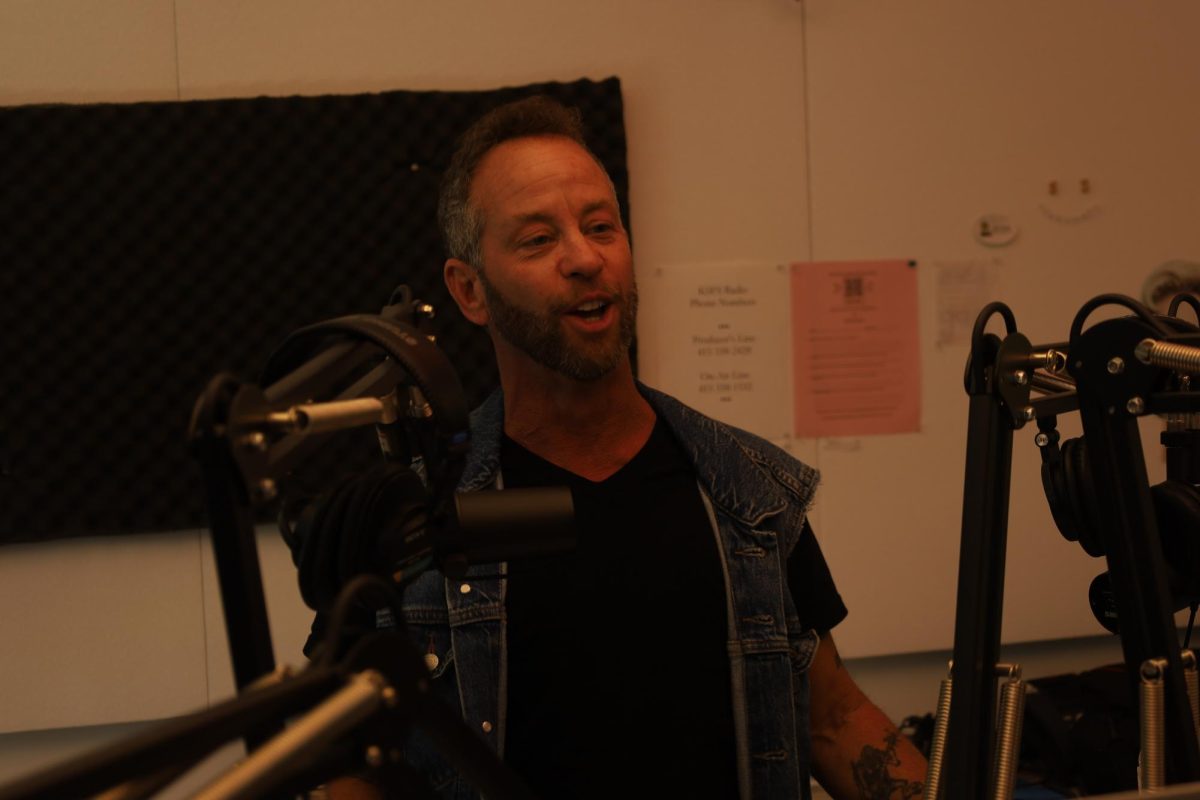Before people moved to San Francisco and covered the hills and wetlands with apartments and parking lots, the exposed topsoil absorbed rainfall. But today that topsoil is hidden under the concrete crust of the city, and San Francisco is facing a drainage problem.
All of the rainwater collects on streets and rooftops, gathering trash and harmful chemicals, before it runs into the city’s gutters. Instead of letting all the garbage drain straight to the ocean as many cities do, San Francisco combines its rainwater with the wastewater produced by people and treats it all before it’s discharged.
“We treat all the sewage coming from people’s homes, businesses, sinks, you name it,” said Jean Walsh, spokeswoman for the San Francisco Public Utilities Commission. “In addition to that, we treat the storm runoff and the rain water. In a lot of other places in the US, that stuff drains straight to the local bodies of water.”
However, the system has its downsides. During heavy rain, the volume of water waiting to be processed can overwhelm the city’s infrastructure, causing some treated sewage to be directly discharged into the ocean and bay.
The PUC has recognized this and is embarking on a multi-billion dollar sewer improvement program that will take place over the next two decades to increase capacity and minimize discharges, according to Walsh.
“I have mixed feelings about the combined sewer systems here in San Francisco,” said Jennifer Clary, program associate at Clean Water Action, a nonprofit focused on clean water issues. “We do have some minimal treatment of storm water, which is more than any other city in California; the difficulty is when you have more than half an inch of rain in an hour it triggers overflows.”
These discharges can release bacteria, as well as other potentially harmful chemicals.
“It’s basically whatever we put into the toilet, which isn’t just fecal matter,” said Jason Gurdak, associate professor of geology at SF State. “Some people flush prescription medications and there are chemicals which are flushed through our bodies, like caffeine. There are a lot of pharmaceuticals and personal care products that end up in the system.”
On top of all that, the discharges also often carry nitrogen and phosphate, which can act as fertilizers for algae. When algae blooms, it depletes the oxygen content of the water which can be harmful to fish and other aquatic organisms, according to Gurdak.
Though these periodic discharges can be bad for the environment, Walsh maintains that when faced with the alternative of letting runoff drain straight to the ocean, the choice is easy.
“What we discharge is free of debris, it’s free of solids, it’s free of litter and it’s usually 94 percent rainwater,” she said.
Walsh also stressed the importance of the PUC’s monitoring system, which tests for bacteria at 14 locations around the city. Results of these tests are posted on the PUC’s website and, in the case of a discharge, warnings are posted wherever people are likely to come into contact with the water.
But posting signs can’t always keep people out of the water, said Oliver Kanner, who surfs at Ocean Beach almost every day.
“I try to stick to surf spots in West Marin after a big rain,” Kanner said. “The city does a good job of warning the public, but after storms is generally when the waves are the best. Surfers aren’t the kind of people who are going to stay out of the water.”
The system has its pros and cons, but larger problems loom in the future. Aging infrastructure and rising sea levels will eventually curtail the city’s ability to discharge its excess wastewater, according to Clary.
“Realistically, if you can’t throw out that combined sewage storm water, it’s going to back up into low-lying city streets and I don’t think people are going to put up with that,” she said.
But simply adding infrastructure will not solve the problem, Walsh said.
“The old way was just to build more tunnels, build more pipes, but we’re looking at better ways to detain the water before it even enters the system using low-impact design. We’re looking at rain barrels and native plants and permeable paving and all these features designed to absorb some of the water before it runs into the sewers.”
Although the PUC has been active in implementing these low-impact features around the city, Clary said that people cannot depend on the city to solve the problems it’s facing. She advocates for a model that emphasizes personal responsibility.
“We need more of a decentralized, people-based model. If you take care of the storm water that falls on your property and your neighbor does the same, we’ll have way less problems down on the shoreline,” she said.
In a state prone to drought, and facing water shortages in the foreseeable future, it doesn’t make sense to dispose of so much water, according to Clary.
“The idea that a drop of water that falls in San Francisco is less valuable than when it falls as a snowflake in the Sierra doesn’t make a lot of sense. It’s falling in our own backyard, we ought to think about how we’re going to use it,” she said.





